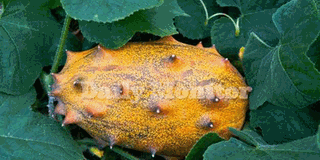The steps in production of thorn-melon

Thorn melon also known as kiwano melon. PHOTO/FILE
Please advise me on the A to Z of thorn melon and where I can buy their seeds to plant? Wahome
Dear Wahome (Answered by Tom Okello Anyi a mixed farmer, Lira District)
Thorn melon is cultivated on farms and it also grows naturally in the fields and in the bush. It adapts well in the semi-arid areas, in warm to hot regions. It grows well at an altitude between 210 to as high as 1800 metres above sea level. The plants are also grown in greenhouses due to their high market value.
Site selection
Select a planting site with rich, well-drained soil and full sunlight exposure. The plant requires warm to hot conditions and does not do well in cold areas.
The soils should be well drained with high organic matter. Clay or loamy soils with a pH range of 6.0 to 6.5 are best for production. Thorn melon is a climber hence requires an area near a trellis or fence to promote climbing. In green house production, plants are trained on posts.
Planting
Thorn melon is propagated by seed. Choose a well-developed ripe healthy fruit from the vine to extract seed. Scoop-out the contents consisting of seed and pulp. Seed germination may be improved by softening the seed coat. The seed together with the pulp is fermented for one to three days in a plastic container. The fruit seed is then thoroughly washed after which it is dried in a shade and sown as soon as possible. Germination of seed can also be improved by priming. This involves soaking the seed in warm water for one hour before planting.
Direct planting
Three to four seeds per hole are planted to a depth about 2cm and covered with a layer of soil. Rouging (removing excess plants) is done after five to seven days to remove excess seedlings and to maintain one plant per hill if planted directly in the field.
Spacing: In the greenhouse, a spacing of 60cm x 60cm can be used while up to 1m apart may be used.
Fertiliser and manure
Compost, manure or inorganic fertiliser can be incorporated depending on soil conditions. In poor soils, a general fertiliser such as NPK 17:17:17 can be applied as a basal fertiliser at planting. Top dressing is recommended three weeks after germination with nitrogenous fertiliser and potassium fertiliser, which can also be added to improve the fruit quality.
Training/trellising
The plants within the greenhouse can be trained upwards and supported by sisal strings which are tied to a wire two metres above the ground. Pruning is done to leave three stems per plant.
Irrigation
The frequency of irrigation depends on prevailing weather, soil type, and stage of crop development. At flowering and fruiting stage, a more frequent irrigation will be necessary.
Maturity and yield
The fruit matures in three to four months under field conditions. Stems of thorned melon die back at the end of the growing season while the fruits remain attached and continue ripening to a bright orange colour. They may be harvested over successive months.
Immature fruits may be harvested at any time during the growing period. One plant in the greenhouse environment produces an average of 10 fruits. Shelf life is up to six months.
Packaging
The fruit has spines/thorns which can result in fruits piercing each other, thus shortening their storage life.
Fruits should be packed in single layers in crates and layers separated for example by dry banana leaves. The banana leaves serve as protective pads to ensure that the fruits do not brush against each other, hence reducing the chances of fruit injury.
Diseases and pests
Thorn melons are susceptible to cucumber mosaic virus, tobacco ring spot virus, tomato ring spot virus, watermelon mosaic virus, and fusarium wilt.
The viral diseases can be prevented by vectors such as aphids and melon flies, white flies and planting the crop away from the host plants in the cucurbit family such as cucumber, courgettes, and pumpkins.
Challenges
The thorn melon fruit has to be grown on its own portion of land, due to its spreading nature unlike other fruits and plants which can be intercropped. Seed production is not yet commercialised hence this can be a limiting factor in production.
Market
There is need to produce based on demand since in some areas demand is low due to lack of awareness about the fruit value. However, there is potential for market as a result of promotions for the consumption of the fruit targeting both local and export market.




